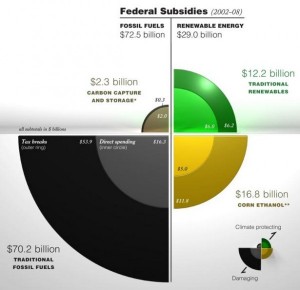February 3, 2014
Julie Rohde
On the night that millions of Americans in the Southeast were hit with the snowstorm of the decade, President Obama addressed the nation: “Climate change is a fact.” Winter Storm Leon (as named by the Weather Channel) wreaked havoc in a part of the nation that rarely experiences this level of extreme winter weather. Horror stories of people trapped in their cars in Atlanta, Georgia took over national news headlines. Perhaps Atlanta and other southern cities were ill prepared for this disastrous weather, but nonetheless, this type of weather is atypical for this part of the country.
Unfortunately, extreme weather patterns are no longer uncommon in many parts of the nation. From cases of severe drought in the Midwest to the decimation caused by Hurricane Sandy in the North East and the greater frequency of tornado occurrences- scientists are claiming that many of these events are human induced. In September 2013, NOAA published a report titled, “Explaining Extreme Events of 2012 from a Climate Perspective”. The report cites several examples of extreme weather patterns and attributes the changes in climate to human activity. Specifically, scientists explored the high July 2012 temperatures of the Midwest in relation to decreased precipitation and increased solar radiation. Carbon emissions and inefficient land use have contributed to the temperature changes experienced in this part of the nation.
In regards to climate change, President Obama was very blatant in discussing the urgency of a safer environment for future generations. His brief recommendations include stronger regulation of carbon emissions and innovative technology to support sustainable energy sources. In order for this sense of urgency to resonate with the American people and a very polarized congress, Obama used the protection of future generations as a motivating factor. He stated, “And when our children’s children look us in the eye and ask if we did all we could to leave them a safer, more stable world, with new sources of energy, I want us to be able to say yes, we did.” This quote simply explains that it is imperative for our generation to limit the footprint we leave behind for our children. Every person is responsible for how their actions shape the climate and environment.
Finding or creating alternative and sustainable energy sources is one of the largest factors in reversing climate change that is induced by human action. Our national dependence on fossil fuels has caused complete decimation of ecosystems and the burning of these fuels contributes to ozone pollution. I believe there are two main entities that hold responsibility in expediting the process of finding innovative energy sources.
First, the United States military is arguably the most crucial stakeholder in alternative energy sources. From a tactical perspective, the increased frequency of natural disasters puts a significant strain on national security. As the military has become more responsible for first response aid work, they have a stake in preventing huge natural disasters. If alternative energy sources could limit extreme weather patterns that are exacerbated by carbon emissions, the military has an incentive to investigate these alternatives. Furthermore, the oil industry is still largely concentrated on international grounds with unstable governments. National security also becomes a concern in international oil trade. The military would like to prevent overseas conflicts caused by oil dependence. With the current adequate funding and elite research teams within the military, the race to find alternative energy could likely reside in military efforts.
The second main entity that will be responsible for innovative energy technology is university institutions. Similar to the military, elite American universities are equipped with research facilities and faculty who are passionate about climate change. Competition between universities will create a market incentive for the best alternative energy source. A tool that could be helpful in accelerating this process would be a competition with a lump sum prize. Something like the Google X-Prize foundation, which offers $30 million for the development of a spacecraft to explore the surface of the moon, could benefit the energy industry. In fact, President Obama’s State of the Union addressed the use of Google and other corporations in aiding the implementation of innovative technologies.
How many more disastrous weather storms will it take for climate change to become a top priority in the United States? Some progress has been made to alleviate climate change. However, the current climate action agenda is very limiting. Our current energy situation must change! In order to protect our future generations as Obama has prompted us to do, the US military and America’s universities will be the primary agents in discovering alternative energy sources.
Sources:
http://www.ametsoc.org/2012extremeeventsclimate.pdf
http://www.googlelunarxprize.org/prize-details/why-google-lunar-xprize











